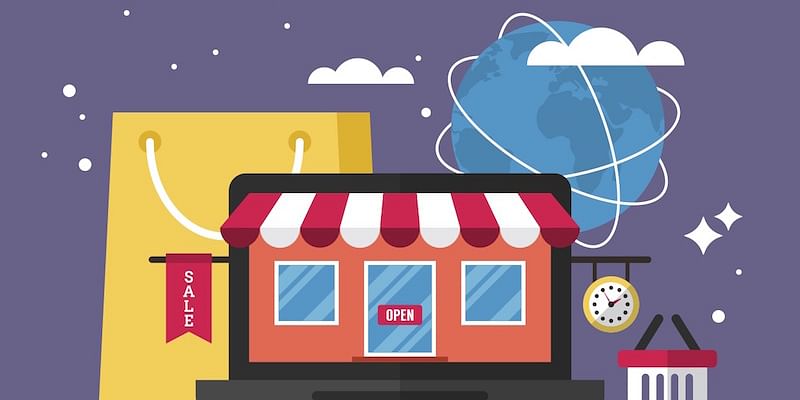Increased connectivity and the spread of smartphones over the past decade have completely transformed Indian commerce. As more and more Indians get access to online services, they become accustomed to buying online – from books and tickets to smartphones, TVs, electronics and increasingly grocery and daily goods.
Over time, the dominant business model of e-commerce players has settled on the marketplace model. While inventory driven e-commerce may often grapple with issues of warehousing or product sourcing, marketplaces have on balance less initial constraints to deal with. More than a dozen startups of the annual Unicorn list published this year by WSJ, had business models that would align themselves to marketplaces. The distinct nature of marketplaces is such that there are push-and-pull factors between buyers and sellers that lead to virtuous cycles – the buyers and sellers on the platform keep providing value to each other thereby bringing scale to the venture.
Before understanding the distinct nature of marketplace, it may be helpful to highlight some of the characteristics that markets must exhibit before they can be accessed using marketplace models. After all, not all offline services can be viably brought onto a marketplace platform. However, there are certain characteristics that take well to marketplaces such as:
- High frequency use: The service being provided is of high frequency, such as hailing taxis, ordering food or making restaurant reservations. If the purchase cycles are longer, brand recall and user engagement tend to get minimized thereby preventing the marketplace from gaining network effects and scale.
- Existing fragmentation of supply and demand: Fragmentation of value chains lead to hidden value that are either not being used or optimized. Further, it also means less friction for a new marketplace player to enter the market. Cumulatively there also appear to be greater advantages that sellers and buyers can receive from each other that they cannot by themselves.
- Network effects: Over time, the marketplace ought to be giving you value that is better than the one that you received in the beginning. In short, the more people that use the service, the better it should get at providing it. Network effects of this kind end up creating tremendous value for both buyers and sellers.
Beneath this view of marketplaces, a helpful distinction can further be made between different categories of marketplaces in this regard. In a sense, not all marketplaces are created equal. Indeed, based upon the service, marketplaces can be divided and sorted into three main categories: basic listings, curated marketplaces, and managed marketplaces. Some characteristics of these are listed below.
Basic listing: These are the plain vanilla listing platforms that basically allow anyone to sell products that they own. A prominent example of this model in the beginning was Ebay and Craigslist. Such platforms have no tabs on the pricing of goods placed on the company as well as they do not dictate the precise user experience (UX) for each good. Expectedly, the service level that a buyer would gain from each listing also varies.
Curated marketplaces: The key difference between this and the basic listings model is the added input that the marketplaces themselves provide to make sure the user experience is a somewhat standardized one. In such a model, there is a filter imposed to vet services/goods providers. In addition, there are mechanisms in place that manage the curation experience through ratings and so on. A large chunk of the marketplaces that have gained scale and have entered the billion+ valuations such as AirBnB, Etsy and Groupon can be bracketed under this rubric.
Managed marketplaces: The last category is that in which services are still provided by a third party. However, the environment, pricing as well as service experience and customer support are all guaranteed by the marketplace itself. TaxiforSure and Ola are perfect examples of how an effective marketplace can develop with buyers and sellers operating under a standardized user experience that in turn is coupled with an assurance provided by the marketplace regarding certain basic quality parameters.
Accel and marketplaces
At Accel, we have worked with many terrific entrepreneurs and helped them in building businesses that have had well executed marketplaces at the core. Globally, we have led the charge in helping build marketplaces that have redefined categories. In the US, Accel has been involved with marketplaces such as 99designs (design services), Etsy (handmade products), Groupon (daily deals) and Trulia (connecting home buyers, renters and sellers). Furthermore, in Europe, Accel has led efforts in startups such as Avito.ru (Russian classifieds), BlaBlaCar (ride sharing service), Deliveroo (food delivery) and Wallapop (a P2P second hand goods marketplace).
In India, our partnerships with entrepreneurs in the marketplace category have ranged from hugely successful e-commerce players such as Flipkart & Myntra to movie/event ticketing platform BookMyShow and taxi hailing service TaxiForSure and Ola. More recently, we have also backed innovative new companies across industries such as Capricoast (home furniture solutions), Coverfox (buying insurance online), Medigo (arranging medical tourism), Portea (healthcare at home), PropTiger (real estate transaction facilitator), Swiggy (food ordering and delivery), Vedantu (online tutoring for K12 students), UrbanClap (all your local services) and ZopNow (grocery ordering). All these startups connect service providers across various sectors while ensuring certain standardized quality that the Indian consumer now expects and demands.

In addition, marketplaces also have tremendous value in streamlining and improving the efficiency of business-to-business transactions. Power2SME is an example of a marketplace that functions in the B2B space. Through Power2SME, Small to Medium Enterprises (SMEs) get connected to suppliers of essential commodities and supplies that allows them to gain savings and ultimately scale their business more efficiently. Similarly, we have three other businesses in the B2B category that are still early in their evolution.
The future of marketplaces
The broader ecosystem of connectivity that has led to the emergence of the new Internet economy also has other components ranging from the tremendous smartphone penetration to social media engagement among India’s younger demographics.
There is, therefore, a huge opportunity to remake the first generation of Internet marketplaces (across industries) and make them more responsive to the needs of the young Indian mobile consumer. In particular, the demands of the smartphones would place greater emphasis on the User Interface (UI) and User Experience (UX) of the product so that it meets the experiential demands of the discerning Indian consumer. The emphasis that mobile products place has shifted from being transactional — getting the best value for a particular good to being experiential – enjoy using the medium that allows me to get a particular service. In the current scenario, the feel and user friendliness of the medium of availing the service is almost as important as the service itself.
Through YourStory’s ‘The Marketplace’ campaign, we hope to engage with a whole new set of startups that are using innovative marketplace models to disrupt traditional and first-generation Internet businesses in India and to touch millions of Indian consumers and businesses in the years to come.
If you are building one, then apply now! – http://themarketplace.yourstory.com/2015/
Note: YourStory published this blog here.
image credit – shutterstock


